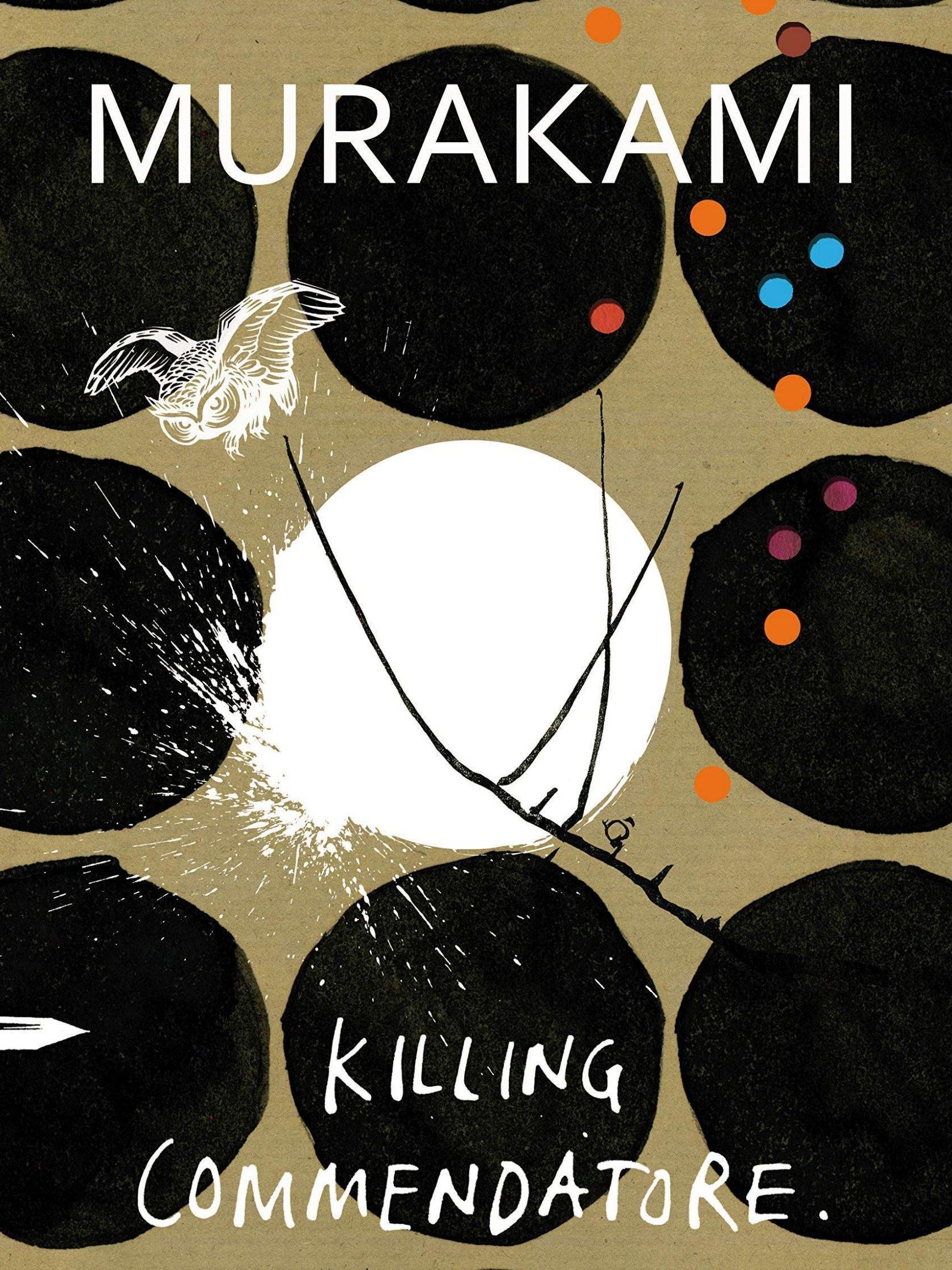Killing Commendatore by Haruki Murakami review: A big-hearted new novel from the great Japanese author
The obscurely lonely domestic images that run through his novels – rain, swimming, pasta, jazz, a particular sort of warm, impersonal sex – root yearning in the truth of daily life

The great Japanese author Haruki Murakami grew famous writing about the tender melancholy of youth. (Norwegian Wood made him so recognisable in Japan that he left.) Reading books from that period, you feel sad without knowing why – and yet, within that sadness glows a small ember of happiness, because to feel sad is at least to feel honestly.
Now in his sixties, he has begun to consider middle age more carefully, as if he sees himself most clearly across a 20-year lag. It’s the subject of his underrated Colourless Tsukuru Tazaki and His Years of Pilgrimage and also of his immersive, repetitive, big-hearted new novel, Killing Commendatore.
The narrator of Killing Commendatore is a 36-year-old painter. His wife has just left him. Having sacrificed his early ambitions as an artist to become a master portraitist, he leaves his Tokyo apartment bewildered, before coming to a realisation: “I ... wanted to try painting whatever I wanted.” A friend from art school lends him a remote house in the mountains, and he begins to search anew for the meaning he once found in pure creation.
As is often the case in Murakami’s fiction, a plot of relative simplicity – an artist’s reinvention – is disrupted by enigmatic, surreal or violent incidents. The narrator’s new residence once belonged to a famous painter, whose peculiar depiction of a sword fight, “Killing Commendatore”, remains in the attic.
Soon after finding the painting, the house’s new inhabitant begins to hear the clear sound of a bell emanating from a “strange circular pit in the woods”. These events disturb him, while also pressing him into a furious creativity; he begins to paint abstract portraits, not simply of faces and bodies but of the souls within them.
One of these portraits is of a mysterious, immensely rich man named Menshiki, who lives nearby. He has bright white hair, a Jaguar and a “very clean, open smile”, while concealing, the painter thinks, “a secret locked away in a small box and buried deep down in the ground”.
It is Menshiki who manages the excavation of the pit. Inside, they find only the ancient bell – but its call brings to life (hold steady here, if you can) a two-foot-tall character from the ominous painting, with a message of mortal importance.
This stuff is very Murakami. Killing Commendatore repeats almost exactly, for example, the descent through a well to a magical world that occurs in his earlier novel The Wind-Up Bird Chronicle. Odd creatures constantly come to life in his writing, perhaps most memorably the human-size frog calmly preparing tea in the short story Super-Frog Saves Tokyo.
Yet there’s a strong sense in Murakami’s work that his allegorical instincts are secondary, the radiation of his characters’ inner sense of dislocation. He took this method to its outermost limits in his monumental 1Q84 (is it time to admit that that book is something of a mess?), but Killing Commendatore gets the balance right.

Watch Apple TV+ free for 7 day
New subscribers only. £9.99/mo. after free trial. Plan auto-renews until cancelled.
ADVERTISEMENT. If you sign up to this service we will earn commission. This revenue helps to fund journalism across The Independent.

Watch Apple TV+ free for 7 day
New subscribers only. £9.99/mo. after free trial. Plan auto-renews until cancelled.
ADVERTISEMENT. If you sign up to this service we will earn commission. This revenue helps to fund journalism across The Independent.
Perhaps this lies in its exhilarating portrayal of how it feels to make art. In long, powerful passages, Murakami describes painting with the intensity of what seems like just-concealed autobiography. “An image of a colour I should add came to me ... the colour was like that of a tree with its green leaves dully dyed by rain. I mixed several colours together and created what I wanted ... even if it doesn’t turn out as a portrait, I told myself, that was okay ... I could think about the next step later on ... like a child, not watching his step, chasing some unusual butterfly ... I don’t remember how much time passed. By the time I looked around, the room had gotten dim.”

One could argue that the realism of such scenes saves Killing Commendatore from its flights of outlandishness; conversely, it’s possible that only in the calm madness of his magical realism can Murakami truly capture one of his obsessions, the usually ineffable yearning that drives a person to make art.
The obscurely lonely domestic images that run through his novels – rain, swimming, pasta, jazz, a particular sort of warm, impersonal sex – root that yearning in the truth of daily life. It’s as Byron wrote: “I had a dream, which was not all a dream.”
Lately, Murakami has written about how this sensation surges again in the middle of life, when we realise that we know less as we age, not more. His characters want to turn themselves inside out, to escape the indecipherable mechanical momentum of their lives. The only path he offers them out of that despair is art; the narrator of Killing Commendatore learns “the courage not to fear a change in one’s lifestyle, the importance of having time on your side”.
They are humble lessons, given the ridiculous events that have befallen him. But that’s the point. Nothing we invent could be as strange as life. We honour that fact by inventing it anyway.
‘Killing Commendatore’ by Haruki Murakami is published by Harvill Secker, £20.00
© Washington Post
Join our commenting forum
Join thought-provoking conversations, follow other Independent readers and see their replies
Comments
Bookmark popover
Removed from bookmarks